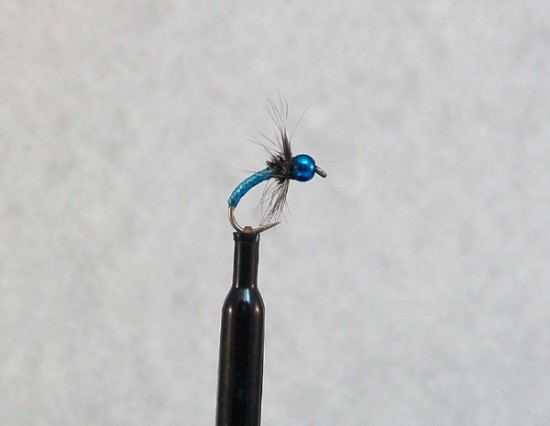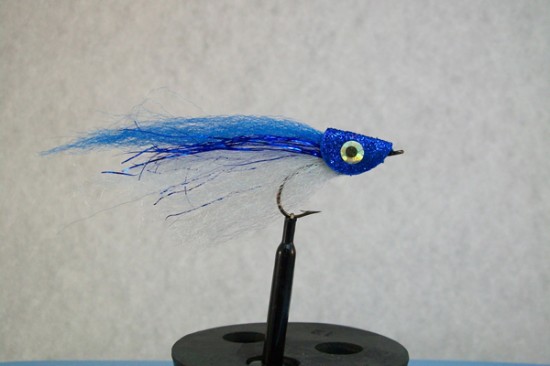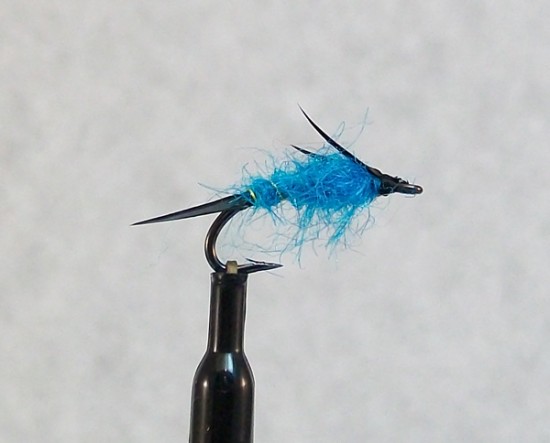Whole in the Water
Well-Known Member
Human and Salmonid Vision
Human vision is 14 times better than a trout or salmons at resolving images. Surface feeding fish like trout have photoreceptors that are packed more densely in the lower part of the retina allowing maximum resolution to upward vision. The unusual shape of the lens, gives them the ability to see both distant and near objects simultaneously – like looking through both parts of a pair of bi-focals at the same time. Trout vision is exceptional both in contrast and movement. Contrast being an underwater background, where different shapes such as stripes and especially circles stand out in their vision. They may still be viewed as fuzzy and lacking detail, but their ability to maneuver a rocky river course or a spring creek weed bed is testimony to their exceptional sight receptors. This flows into a trout’s ability to detect movement. The slightest wiggle or surface dimple provokes an automatic response in the trout’s brain. Salmonids can see the same color we humans do, but we are more sensitive in the green spectrum and salmonids are more sensitive to blue.
Experiments have shown that not only will the fish show a preference for blue under most background and light intensity conditions, but that they are able to differentiate between shades of blue. After blue comes red in visual sensitivity, about 10x lower than blue. Then followed by black, orange, brown, yellow and green. What they actually see depends on a number of factors including wavelength or frequency of the available light, and the turbidity of the water in which they live.
Light Penetration
The thing to keep in mind is that not all fish have the same vision capabilities. Different species of fish adapt to their environment in different ways. Ocean dwelling fish have the ability to see more into the blue spectrum due to the blueness of the clear ocean waters. Whereas a freshwater species living in more turbid waters containing rotting vegetation being colored by yellowish-red pigments has a color vision spectrum that shifts more toward red than blue. This suspended matter scatters the light and creates a murky effect. As white light passes through a column of water it gets absorbed and/or reflected. The deeper the water, the less light can penetrate. The first color to be absorbed is red at around 12-15 feet, followed by orange at about 30 feet. And you guessed it, blue penetrates the furthest at about 60-70 feet. Remember these are rough estimates under ideal conditions. Change the conditions of the test by lowering the light or making the water very turbid and red can be absorbed after a few inches. The light as it passes through water is reflected off particles and is scattered in random directions. Because of this scattering effect, objects appear indistinct and fuzzy, just as they do in fog on land. Shortwave light (blue) is affected the most, long wave (red) the least – this is why freshwater fish generally have a color response more red shifted than fish of the clear ocean waters.

Rods and Cones
In a fish’s eye the rods are physically retractable. And when light levels are high the rods are retracted into the back of the retina and covered with a black melanin layer. Conversely the darker the color, the less the numbers of photons reflected and counted. When light levels fall and the cone sensitivity degrades the rods move upwards alongside the cones to provide gray scale vision. The rods count photons regardless of color. They only provide information on the brightness of objects. In other words, the lighter and brighter the color the greater the number of photons received and counted. Their eyes have this unusual, though variable, (according to day-length) system of slowly shutting down. Over a period of hours, the type of vision which will not be used for some time. During the day the sensitive rods are withdrawn below the surface of the retina and shielded from bright light by dark pigments whilst the cones move to the upper layer to give optimum color vision. Even in the brightest moonlight the fish will not see color, only shades of gray. Studies on brown and rainbow trout show that there are two periods of light adaptation within this cycle, these coincide with the main feeding times, dawn and dusk.The changeover from cones to rods starts well in advance of darkness and takes about 5 hours but the reverse change from rods to cones can take even longer. This would support a theory of go “big and bright for the morning bite”. The cones are ready to accept the sunlight of the day before the sun is actually out. Humans and fish have an adaptive eye that is sensitive to the illumination level. In darkness neither can see color, but we are able to detect some shaping differences.
Theories and Experiments
To further confuse the issue, this is an excerpt from a post on www.flytyingforum.com. I’ve inquired deeper into this but at this point nothing has developed:
I have to say that when I started this piece, it was more of a half-hearted approach and more along the lines of why anglers tend to flock toward certain colors when fishing. It turns out that there are a lot of research and theories out there that go way further into what colors a fish can see than just a few crazy steelheaders trying to make their obsessions more successful. I owe a huge thanks to the folks at Sexyloops.com and especially Dave Wallbridge for answering my never-ending questions and helping me understand a great deal more about fish vision. From what I’ve compiled, I have to say that faith in what you tie on the end of line and the way you present it to the fish are going to make the difference in your catch. One can certainly get tangled up in blue.
Sources:
http://www.sexyloops.com/articles/whatsalmonidssee.shtml Dave Wallbridge
http://www.sexyloops.com/articles/light.shtml Max Garth
Human vision is 14 times better than a trout or salmons at resolving images. Surface feeding fish like trout have photoreceptors that are packed more densely in the lower part of the retina allowing maximum resolution to upward vision. The unusual shape of the lens, gives them the ability to see both distant and near objects simultaneously – like looking through both parts of a pair of bi-focals at the same time. Trout vision is exceptional both in contrast and movement. Contrast being an underwater background, where different shapes such as stripes and especially circles stand out in their vision. They may still be viewed as fuzzy and lacking detail, but their ability to maneuver a rocky river course or a spring creek weed bed is testimony to their exceptional sight receptors. This flows into a trout’s ability to detect movement. The slightest wiggle or surface dimple provokes an automatic response in the trout’s brain. Salmonids can see the same color we humans do, but we are more sensitive in the green spectrum and salmonids are more sensitive to blue.
Experiments have shown that not only will the fish show a preference for blue under most background and light intensity conditions, but that they are able to differentiate between shades of blue. After blue comes red in visual sensitivity, about 10x lower than blue. Then followed by black, orange, brown, yellow and green. What they actually see depends on a number of factors including wavelength or frequency of the available light, and the turbidity of the water in which they live.

Light Penetration
The thing to keep in mind is that not all fish have the same vision capabilities. Different species of fish adapt to their environment in different ways. Ocean dwelling fish have the ability to see more into the blue spectrum due to the blueness of the clear ocean waters. Whereas a freshwater species living in more turbid waters containing rotting vegetation being colored by yellowish-red pigments has a color vision spectrum that shifts more toward red than blue. This suspended matter scatters the light and creates a murky effect. As white light passes through a column of water it gets absorbed and/or reflected. The deeper the water, the less light can penetrate. The first color to be absorbed is red at around 12-15 feet, followed by orange at about 30 feet. And you guessed it, blue penetrates the furthest at about 60-70 feet. Remember these are rough estimates under ideal conditions. Change the conditions of the test by lowering the light or making the water very turbid and red can be absorbed after a few inches. The light as it passes through water is reflected off particles and is scattered in random directions. Because of this scattering effect, objects appear indistinct and fuzzy, just as they do in fog on land. Shortwave light (blue) is affected the most, long wave (red) the least – this is why freshwater fish generally have a color response more red shifted than fish of the clear ocean waters.

Rods and Cones
In a fish’s eye the rods are physically retractable. And when light levels are high the rods are retracted into the back of the retina and covered with a black melanin layer. Conversely the darker the color, the less the numbers of photons reflected and counted. When light levels fall and the cone sensitivity degrades the rods move upwards alongside the cones to provide gray scale vision. The rods count photons regardless of color. They only provide information on the brightness of objects. In other words, the lighter and brighter the color the greater the number of photons received and counted. Their eyes have this unusual, though variable, (according to day-length) system of slowly shutting down. Over a period of hours, the type of vision which will not be used for some time. During the day the sensitive rods are withdrawn below the surface of the retina and shielded from bright light by dark pigments whilst the cones move to the upper layer to give optimum color vision. Even in the brightest moonlight the fish will not see color, only shades of gray. Studies on brown and rainbow trout show that there are two periods of light adaptation within this cycle, these coincide with the main feeding times, dawn and dusk.The changeover from cones to rods starts well in advance of darkness and takes about 5 hours but the reverse change from rods to cones can take even longer. This would support a theory of go “big and bright for the morning bite”. The cones are ready to accept the sunlight of the day before the sun is actually out. Humans and fish have an adaptive eye that is sensitive to the illumination level. In darkness neither can see color, but we are able to detect some shaping differences.

Theories and Experiments
To further confuse the issue, this is an excerpt from a post on www.flytyingforum.com. I’ve inquired deeper into this but at this point nothing has developed:
“Apparently written by a Fisheries Biologist. This is for the Salmon River in New York State referring to the fall salmon run and their lockjaw toward taking a fly. The Tule strain of Chinook will hang at the outer parts of the estuary continuing to feed until they are ripe then run the river and spawn quickly, and die. While providing a great river nutrient and prolific breeders, they are difficult to get to play, unless you understand their physiology and the declining portion of their life cycle. This particular species of Chinook has the fastest rate of decay of any Chinook species. This is significant not only in quality of the meat, but also in their vision. Tule Chinook begin losing rods and cones in their eyes in as little as 4 hours of entering their natal rivers. The first colors to go are red (4-6hrs), then yellow (10-12hrs), then green (24hrish) blue/purple (96 hrs), before UV (death). Out here if we are targeting tules we will be using blue/nickel because of the color still being visible and the high contrast. These fish as they lose their color spectrum vision become increasingly dependent on contrast in objects to identify them. Essentially their vision becomes more canine like and less like ours (in the lake they see 23 shades of red, humans 18). Their vision also becomes more dependent on motion.”
Several years ago a series of behavioral experiments were conducted in the UK. The experiments involved training fish to approach a colored screen when they would be fed and one of the conclusions was that trout are more sensitive to blue than red by a factor of about 10 times. This is being viewed as not of any great importance to us, as anglers. Dave Wallbridge whom has been a great contributor to this piece has also been conducting a series of experiments himself over a number of seasons, and cannot disagree with these findings. Dave stated, ”Even though my evidence is entirely empirical (my experiments were conducted on rivers and lakes) I would agree with the generally held view that subtle changes in the visual pigments are probably not terribly important when designing flies and that one should design flies that show up well in the particular color of water. As long as the fish has color vision it should be able to see the fly because all of the visual pigments have a wide absorption spectrum and even though the peak sensitivity may be shifted they will still be able to see the color. In addition, where the fly is intended to mimic a natural insect it is far more important for it to offer the impression of being that insect and this means it should be of roughly the correct size and have approximately the same distribution of color contrast.”
I have to say that when I started this piece, it was more of a half-hearted approach and more along the lines of why anglers tend to flock toward certain colors when fishing. It turns out that there are a lot of research and theories out there that go way further into what colors a fish can see than just a few crazy steelheaders trying to make their obsessions more successful. I owe a huge thanks to the folks at Sexyloops.com and especially Dave Wallbridge for answering my never-ending questions and helping me understand a great deal more about fish vision. From what I’ve compiled, I have to say that faith in what you tie on the end of line and the way you present it to the fish are going to make the difference in your catch. One can certainly get tangled up in blue.
Sources:
http://www.sexyloops.com/articles/whatsalmonidssee.shtml Dave Wallbridge
http://www.sexyloops.com/articles/light.shtml Max Garth

